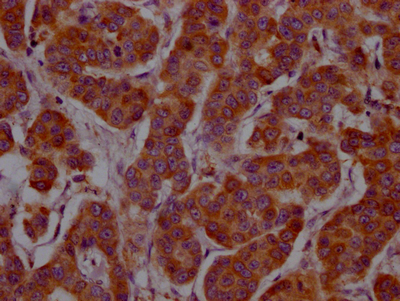The IL4 recombinant monoclonal antibody is produced using recombinant DNA technology and is suitable for detecting human IL4 protein in ELISA and IHC applications. The IL4 monoclonal antibody gene is synthesized after sequencing the cDNA of the IL4 antibody-producing hybridomas. These hybridomas are produced by fusing myeloma cells with B cells obtained from an animal immunized with a synthesized peptide derived from human IL4. The synthesized gene is then cloned into a vector and transfected into cells for cultivation. Finally, the resulting IL4 recombinant monoclonal antibody is purified from the cell culture supernatant using affinity chromatography.
The IL4 protein is a cytokine that plays a role in regulating the immune response in cells. In particular, it is involved in promoting the differentiation of T helper 2 (Th2) cells, which are a type of immune cell that plays a role in the response to certain pathogens, such as parasites. IL4 can also stimulate the production of immunoglobulin E (IgE) antibodies, which are involved in allergic responses. Additionally, IL4 has been shown to have anti-inflammatory effects and is thought to play a role in modulating the immune response to prevent excessive inflammation.




